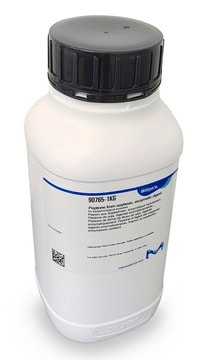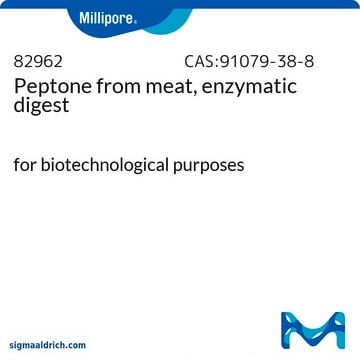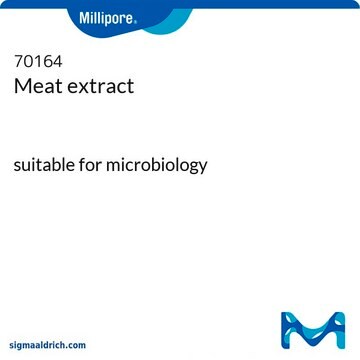P5905
Peptone from animal tissue
from meat, BioReagent, suitable for cell culture, suitable for plant cell culture
Sinónimos:
Peptone from animal source
About This Item
Productos recomendados
origen biológico
animal (meat)
Línea del producto
BioReagent
Formulario
powder
técnicas
cell culture | mammalian: suitable
cell culture | plant: suitable
solubilidad
H2O: 50 mg/mL
Condiciones de envío
ambient
temp. de almacenamiento
room temp
cadena SMILES
O(C)C(=O)C(CCC(CC)(CC)C)C(=O)OC
InChI
1S/C13H24O4/c1-6-13(3,7-2)9-8-10(11(14)16-4)12(15)17-5/h10H,6-9H2,1-5H3
Clave InChI
AIUDWMLXCFRVDR-UHFFFAOYSA-N
¿Está buscando productos similares? Visita Guía de comparación de productos
Descripción general
Aplicación
Otras notas
Código de clase de almacenamiento
11 - Combustible Solids
Clase de riesgo para el agua (WGK)
WGK 3
Punto de inflamabilidad (°F)
Not applicable
Punto de inflamabilidad (°C)
Not applicable
Equipo de protección personal
Eyeshields, Gloves, type N95 (US)
Elija entre una de las versiones más recientes:
Certificados de análisis (COA)
¿No ve la versión correcta?
Si necesita una versión concreta, puede buscar un certificado específico por el número de lote.
¿Ya tiene este producto?
Encuentre la documentación para los productos que ha comprado recientemente en la Biblioteca de documentos.
Los clientes también vieron
Nuestro equipo de científicos tiene experiencia en todas las áreas de investigación: Ciencias de la vida, Ciencia de los materiales, Síntesis química, Cromatografía, Analítica y muchas otras.
Póngase en contacto con el Servicio técnico











